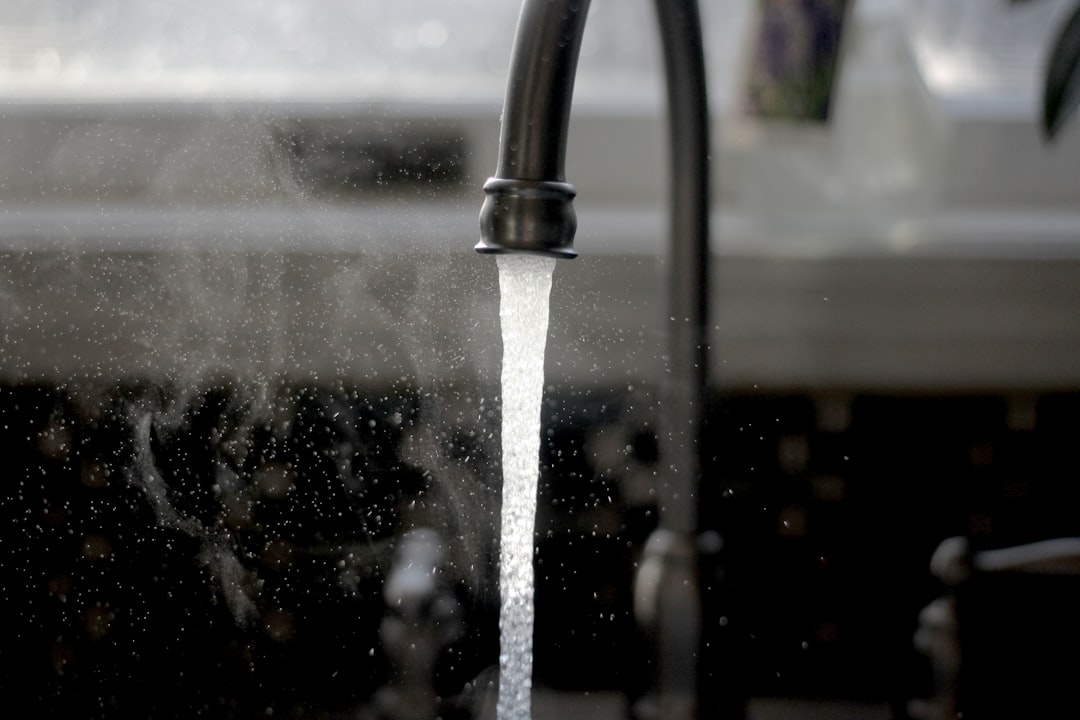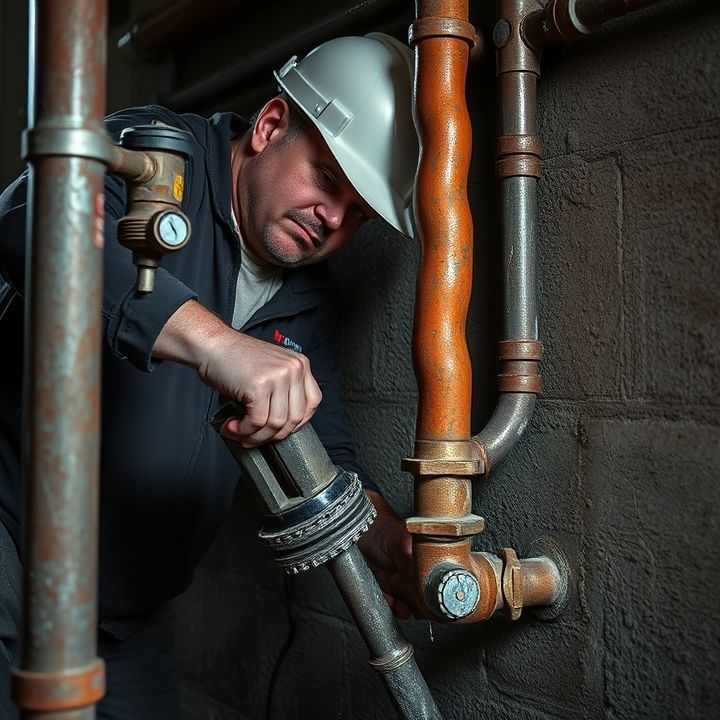Table of Contents
- Introduction
- Latest trends in plumbing pipe replacement and materials
- The importance of plumbing fixture installation for energy efficiency
- Common causes and solutions for plumbing valve repair issues
- How to choose the right plumbing emergency service for your needs
- Best practices for plumbing drain cleaning and maintenance
- Key signs for plumbing water heater service and replacement
- Overview of plumbing sewer line repair techniques and technologies
- The role of plumbing leak detection in preventing water damage
- Conclusion
- Frequently Asked Questions
Introduction
In an era where technology reshapes every aspect of our lives, it’s no surprise that the plumbing industry is experiencing a revolution of its own. Gone are the days of relying solely on traditional tools and methods; today’s plumbers are harnessing cutting-edge innovations that not only streamline their work but also enhance the quality and efficiency of water systems.
From smart leak detection systems that can alert homeowners before a disaster strikes, to advanced pipe inspection technologies that make diagnosing issues a breeze, the advancements are nothing short of remarkable.
As we dive deeper into this plumbing revolution, we’ll explore how these groundbreaking innovations are transforming the industry and ensuring that our homes remain safe, sustainable, and efficient. Buckle up as we journey through the latest trends that are reimagining what it means to be a plumber in the 21st century!
Latest trends in plumbing pipe replacement and materials
In recent years, there have been several noteworthy trends in plumbing pipe replacement and materials. One of the most significant shifts is the increased use of PEX (cross-linked polyethylene) piping. PEX is lightweight, flexible, and easier to install than traditional materials, making it a popular choice among plumbers and homeowners alike. It also resists corrosion and scale, offering enhanced durability over time.
Another emerging trend is the use of PVC (polyvinyl chloride) for drainage and venting applications. PVC is not only cost-effective but also resistant to rust and chemical damage, making it suitable for a variety of plumbing systems. Additionally, eco-friendly materials, such as recycled metal pipes and biodegradable materials, are gaining traction as consumers become more environmentally conscious.
Smart plumbing technologies are also on the rise, incorporating sensors and IoT capabilities to monitor pipe conditions and detect leaks promptly. By staying updated with these trends, homeowners can make informed decisions regarding piping choices that enhance efficiency and sustainability in their plumbing systems.
The importance of plumbing fixture installation for energy efficiency
The installation of plumbing fixtures plays a crucial role in enhancing energy efficiency within a home or commercial setting. Properly installed fixtures, such as faucets, toilets, and showerheads, can significantly reduce water consumption without sacrificing performance.
This not only contributes to lower utility bills but also aids in conserving vital water resources. Energy-efficient plumbing fixtures are designed to use less water while still delivering adequate pressure and flow, striking a balance between comfort and conservation.
Additionally, advancements in plumbing technology, such as smart fixtures, allow for better monitoring and management of water usage, further promoting energy efficiency.
Homeowners and businesses that prioritize the installation of energy-efficient plumbing fixtures can expect not only immediate savings but also a long-term reduction in their environmental footprint. With the growing concern over water scarcity and rising energy costs, investing in high-quality, efficient plumbing fixtures is a wise decision that benefits both the user and the planet.
Common causes and solutions for plumbing valve repair issues
Plumbing valve repair issues are common and can stem from various causes. One frequent culprit is wear and tear. Over time, valves can become corroded or develop leaks due to prolonged exposure to water. This occurs especially in older plumbing systems where the materials may be less durable.
Another common issue is sediment buildup. Hard water can leave mineral deposits inside the valve, hampering its ability to function properly. This often leads to low water pressure or valves not opening and closing as intended.
A third cause can be improper installation. If a valve is not fitted correctly, it can create stress points that lead to leaks or valve failure.
Solutions for these issues often include regular maintenance, such as cleaning the valve and replacing worn-out parts. In some cases, replacing the entire valve may be the most effective option. Always consult a professional if you’re uncertain about the problem, as they can provide expert advice and ensure proper repair.
How to choose the right plumbing emergency service for your needs
Choosing the right plumbing emergency service is essential for ensuring that urgent issues are addressed swiftly and effectively. Start by evaluating the availability of the service; a reliable emergency plumber should be available 24/7 to handle unexpected problems. Next, check for certifications and licensing. A qualified plumber should have the necessary certifications to guarantee their expertise. Additionally, consider the company’s reputation; online reviews and testimonials can provide valuable insights into their track record and customer satisfaction. It’s also wise to inquire about the range of services offered, as some companies may specialize in particular areas such as residential plumbing or commercial plumbing. Remember to ask about pricing as well; a reputable service should provide transparent pricing and no hidden fees. Lastly, trust your instincts when you communicate with the service; responsive and professional communication is often a good indicator of the quality of service you can expect.
Best practices for plumbing drain cleaning and maintenance
Maintaining and cleaning plumbing drains is essential for ensuring the longevity and efficiency of your plumbing system. Regular maintenance can prevent clogs and other issues that can lead to costly repairs. One of the best practices is to use a strain guard in sinks and tubs to catch hair and food particles, which can easily lead to blockages. Additionally, flushing drains with hot water on a monthly basis can help dissolve grease and prevent buildup.
It’s also wise to avoid dumping grease and oils down the drain, as they can solidify and create obstructions. For more stubborn clogs, using a mixture of baking soda and vinegar can be an effective natural remedy. This combination helps break down debris without harsh chemicals.
Regularly inspecting and cleaning drain traps can also be beneficial. If you are experiencing persistent drain problems, it’s advisable to consult a professional plumber who can provide a more thorough inspection and necessary cleaning services. Implementing these best practices can keep your plumbing system flowing smoothly and reduce the risk of future issues.
Key signs for plumbing water heater service and replacement
Recognizing the key signs that indicate your water heater may need servicing or replacement is crucial for maintaining a safe and functional plumbing system. One significant sign is the presence of rusty water, which can indicate corrosion within the tank. If your water heater is producing strange noises, such as popping or rumbling, this could suggest sediment buildup that requires attention. Additionally, inconsistent water temperature may signal a failing heating element, which can compromise your comfort and convenience.
Another alert is the presence of leaks around the heater, which can lead to water damage and increased bills. If your water heater is over 10 years old, it may also be reaching the end of its lifespan, making it prudent to consider replacement. Lastly, a sudden spike in utility bills may indicate that the heater is working harder than it should, potentially due to inefficiency. Regular maintenance and monitoring of these signs can help ensure you avoid unexpected breakdowns.
Overview of plumbing sewer line repair techniques and technologies
Plumbing sewer line repair techniques have evolved significantly over the years, incorporating advanced technologies that enhance efficiency and effectiveness. Traditional methods often involved extensive excavation, which could be labor-intensive and disruptive. However, modern techniques such as trenchless repair options have revolutionized the field. These methods enable plumbers to access and repair sewer lines with minimal digging, reducing the disturbance to landscaping and driveways.
One commonly used technique is pipe relining, where a new lining is applied to the existing pipe, effectively sealing cracks and preventing leaks. Another method is the use of robotic technology to locate blockages and perform repairs remotely. Additionally, video inspection technology allows plumbers to assess the condition of sewer lines without invasive procedures. This diagnostic tool provides real-time footage of the interior of pipes, helping to identify problems accurately and efficiently.
As technology continues to advance, the plumbing industry is likely to see even more innovative solutions for sewer line repairs, aimed at reducing costs and improving service quality.
The role of plumbing leak detection in preventing water damage
Plumbing leak detection plays a crucial role in preventing water damage, which can often lead to costly repairs and renovations. When leaks go undetected, they can create a multitude of problems, including structural damage, mold growth, and increased water bills. Early detection of leaks can significantly reduce the risk of water damage, allowing homeowners and businesses to address issues before they escalate.
Advancements in technology have made leak detection more efficient than ever. Techniques such as acoustic detection, infrared thermography, and moisture meters allow plumbers to pinpoint leaks without invasive methods. This not only minimizes disruption but also enables prompt repairs, preserving the integrity of the property.
Regular maintenance and inspections can help identify potential leaks early on. Homeowners should be vigilant about signs of water damage, such as damp spots, unusual sounds, or sudden changes in water pressure. By prioritizing leak detection, individuals can protect their investments and ensure a safe, healthy living environment.
Conclusion
In conclusion, the plumbing industry is undergoing a significant transformation thanks to the latest innovations in technology, materials, and practices. Homeowners have a wealth of options to enhance the efficiency and reliability of their plumbing systems, from advanced piping materials like PEX and PVC to energy-efficient fixtures that reduce water consumption. Utilizing modern solutions such as leak detection technology and trenchless sewer repairs can prevent costly damages and ensure long-term effectiveness. As plumbing continues to evolve, staying informed about these developments is essential for making educated choices about maintenance and repairs.
We encourage you to take action today. If you’re experiencing plumbing issues or want to upgrade your systems with the latest technologies, don’t hesitate to reach out for professional assistance. Call 573-555-2121 now to speak with our expert plumbers who can provide the best solutions for your plumbing needs. By prioritizing your plumbing systems, you’ll protect your home and investment for years to come.

